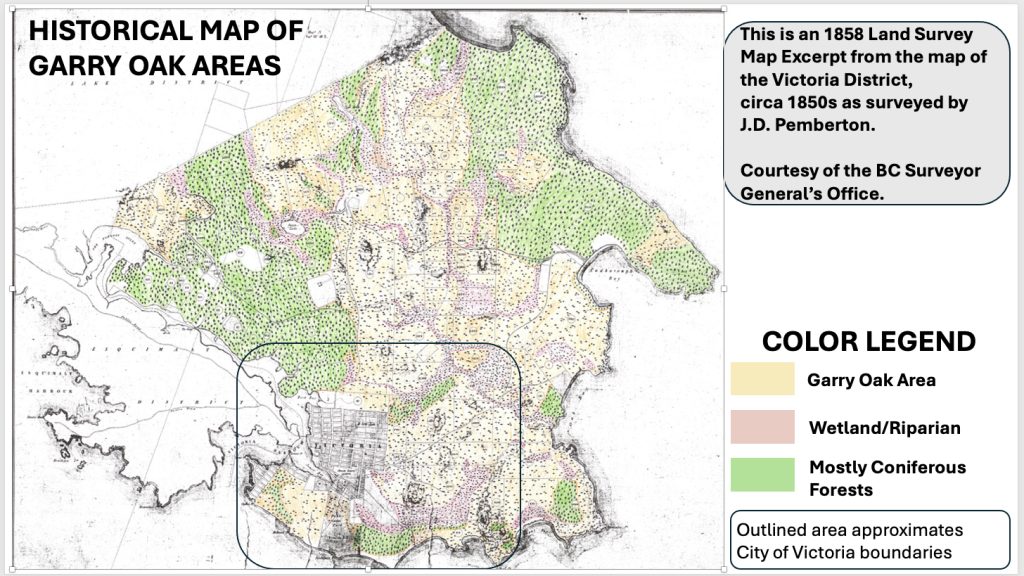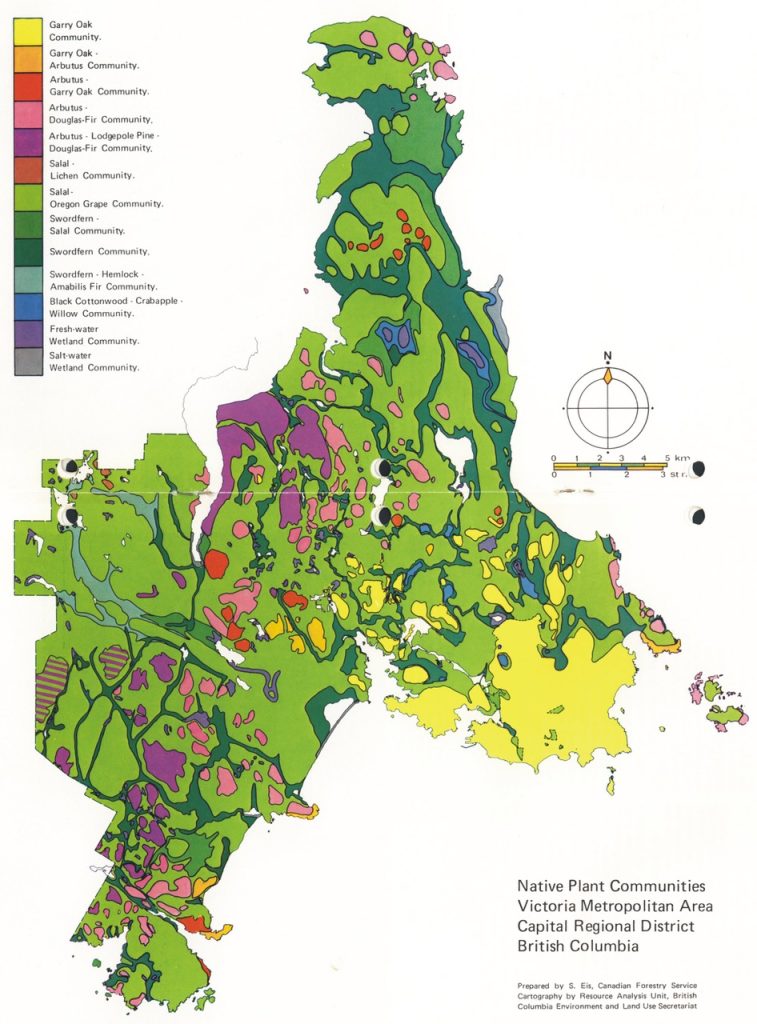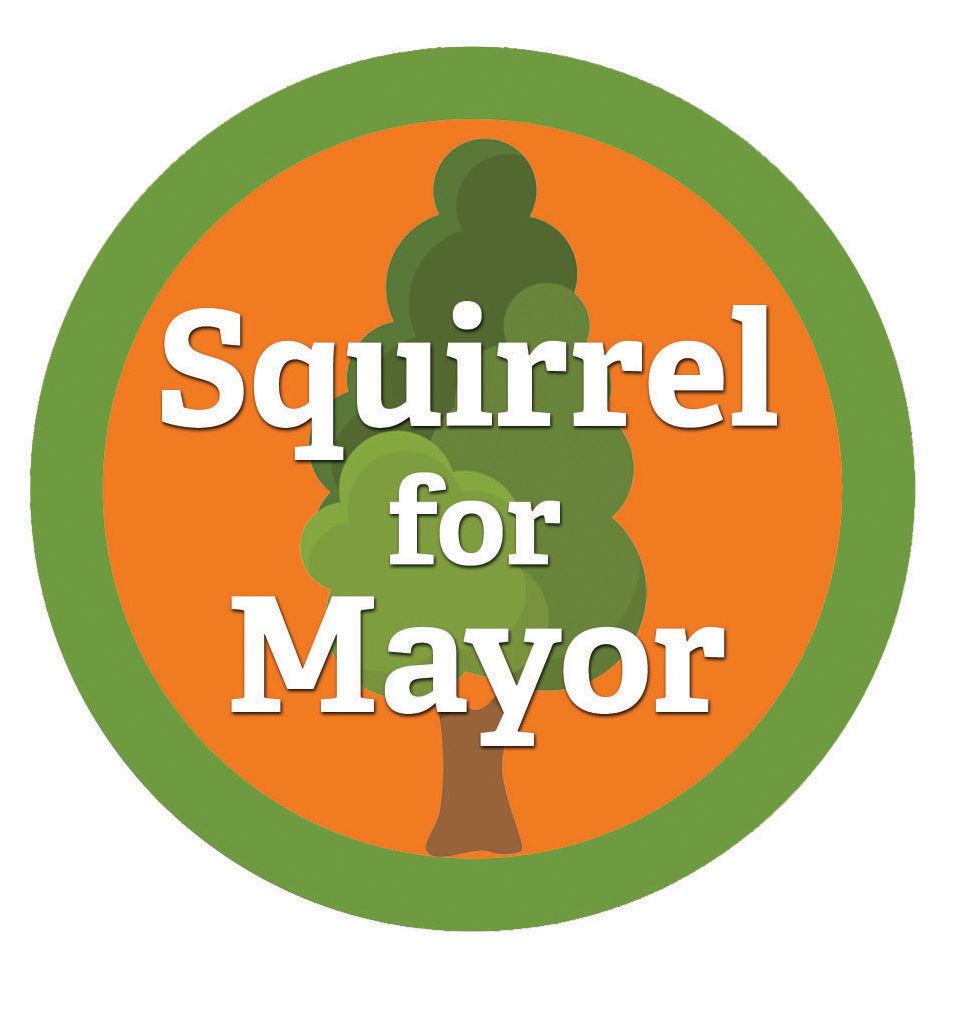The urban area of the City of Victoria is the Garry oak ecosystem (GOE)–– a fact often left out of discussions on the urban forest. The Garry oak ecosystem, or Kwetlal food system in the ləkwW əŋən language, has been shaped by Indigenous agroecological management for thousands of years and emerged after the glacial retreat around 10,000 years ago. Prior to European settlement, most of the land now within the City of Victoria (with the exception of the shorelines and the low-lying riparian areas), supported the Garry oak ecosystem. The open woodland character resulted from millennia of ləkwW əŋən land management and harvesting. In the absence of these activities, the landscape would be dominated by closed stands of Douglas-fir and Grand fir.
The Garry oak (GO), a long-lived keystone species, currently supports over 1,645 co-evolved species of plants, insects, amphibians, reptiles, birds, and mammals, making its preservation crucial. GO and associated ecosystems in this region have a unique local genetic adaptation would be difficult to re- introduce if lost. With continued intentional inputs drawing from ləkwW əŋən knowledge, human and non- human populations may continue to benefit from this highly adaptable and long-lived plant community.



GARRY OAK ECOSYSTEM – WHAT REMAINS
| Area | Year 1800 (Ha) | Year 1997 (Ha) |
| Victoria | 1,460 | 21 |
| Oak Bay | 850 | 25 |
| Saanich | 3,473 | 192 |
| Central Saanich | 740 | 7 |
| Sidney | 30 | 0 |
| North Saanich | 1, 040 | 1 |
| Esquimalt | 470 | 20 |
| Colwood | 320 | 16 |
| Langford | 370 | 105 |
| View Royal | 270 | 39 |
| Metchosin | 1,180 | 49 |
| First Nation Reserves | 240 | 37 |
| Total | 10,443 | 512 |
Source: GOERT, http://goert.ca
Resources
